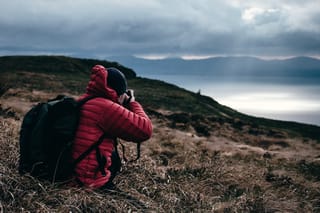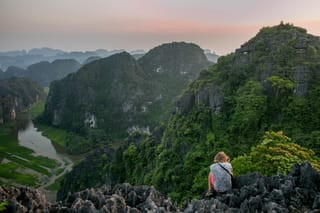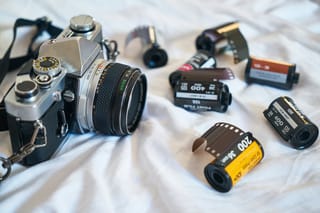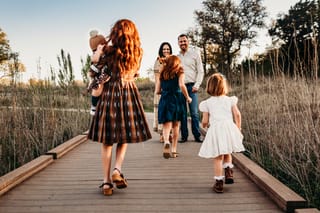
Photography opens up the opportunity to dabble in a variety of different genres. The genre near and dear to me is casual and formal portraits. Like many, I have shot casual portraits since I first laid hands on a camera. Then a few years ago I was singled out by friends and acquaintances to take formal portraits and I enjoyed it a great deal which led me to learn more. With regards to this topic I will also touch upon the typical “what type of gear you use, production tips, etc…” questions I get from time to time.
Part I: Psychology
Note: Intended for all audiences (but seasoned professionals have likely muscled past this phase long ago) I am first looking to encourage folks just starting to get past their largest hurdle, which is internal. The tools necessary to get past this hurdle cannot be put in to a shopping cart, virtual or otherwise. All responses based on my personal experience and are non-binding.
A while back I wrote a blog post that included a summary as motivation for getting out of your own way. This list specifically dealt with lighting and started with:
- Bring the lights out of the house.
That was my single, biggest hurdle. I lost track of how long I practiced using lighting set ups with offspring, wife, and mostly the most patient Pumpkinhead Von Exercise Ball… (Photo below taken using film era Pentax 50mm f/1.7 on Pentax K-1 testing Neewer 32″ softbox and Yongnuo YN560 trigger/flashes mentioned below.)

…but none of that mattered if I never got the set up out of the house.
Don’t get me wrong, practice was a huge help once out of the house and it kept me from looking like a complete noob, but out in the wild is where I truly learned. Shooting portraits in many varying environments that are not your bonus room (Window light to night fall, a tannish, oatmeal or dark color wall coloring as opposed to the off white I am used to, a cramped oddly lit bonus room, misplacing/running out of 120 film for instance.) and learning to adapt on the fly by experience is where the real learning happens.
Part II: Gear
What type of gear do you use?
- A camera. Any sensor as long as you make sure it captures images organically or electronically.
- A lens. What lens? Depends.
- No loot?
- Kit lens. Period.
- Depth of field may not be abundant with kit lenses due to their humble specs, but using uncluttered and/or distant backgrounds works wonders.
- 3-5 folks?
- Nifty 50mm equivalent if you can swing it. Few regret a fast 50mm lens.
- Also great for 1 or 2 subjects in tight quarters.
- One or two folks with space to step back?
- 85mm or 70-200mm.
- Budget tight? Cop an old film 85mm or 135mm if you are not afraid of manual focusing.
- No loot?
- Light.Add and remove. What kind? Yes.
- Environment
- Free
- A large neutral wall at your back as a reflector or windows at your back.
- Trees for shade if you are unable to avoid a midday portrait. Under street lights, or whatever is around that will not throw off an odd color.
- Big multi sided fold up reflectors.
- Can be had for less than $20 (I have this one).
- Require no batteries, extremely portable, and serve a whole host of purposes from reducing light to reflecting light.
- How? Google and YouTube are your friends. Just practice folding them back up alone or with friends.
- Environment
-
- Light stick.
- From Ice Lights to the very affordable Yongnuo YN360 these are great for adding light on the fly. Once in a dimly lit Diggs Gallery at WSSU, I went to my car and grabbed one to take this shot of Zun Lee (Look him up. Awesome guy and quite a talent.) and a WSSU Professor. (Photo below taken w/ vintage Takumar M42 50mm f/1.4 on Pentax K-1 w/ Yongnuo YN360 held by a kind and friendly voice activated light-stand.)
- Light stick.
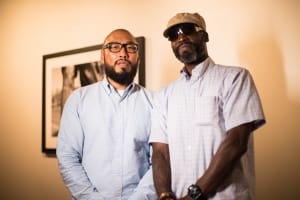
- On the body, bounce flash.
- I have good luck with aftermarket models over many systems, but brand matched models will often offer more features.
- Some balk, whether by bounce card or nearby surface, as long as you do not point the flash directly at the subject (or wonky colored wall or ceiling) they serve as a very portable upgrade in circumstances where a bit more light would help.
- Stands, constant lights, flashes and soft boxes.
- This was a great starting point for me research wise.
- Whatever you can afford or are inclined to spend will do. I have had very good luck with the Yongnuo YN560 family of trigger and flashes.
- More expensive models may offer off camera TTL, but I have grown fond of the consistency and convenience of a remote trigger system with remote controls from the trigger like this one.
- Enjoying the portability/affordability of flashes personally, but strobes are a great upgrade.
- Some spend a fortune on softboxes, but the Neewer models I have purchased (octagon and rectangular w/ grid) seem to work just fine. Not saying there is not a benefit to spending more. Just not necessary for me at this time.
- Even less expensive is a simple 3 light constant light set up I used to get my feet wet that provided far less light than flashes or strobes, but performed far beyond my expectations for a family reunion shoot (my own family and I created a website for them). I used them with my Hasselblad and my digital camera to great effect. Plus I still use the stands and umbrellas that came with this kit with my flashes. (Picture below using sub $60 lighting kit w/ Hasselblad 501c.)
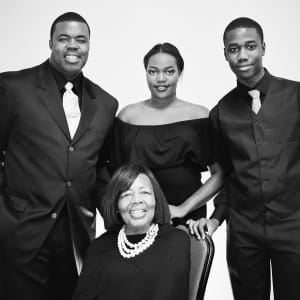
Part III Socializing aka Interacting with Actual Human Beings
Whether casual or formal, parts I and II do not matter if you do not learn how to quickly engage and direct perfect strangers, family and friends alike. The way I got through it?
- Research
- Again, YouTube is your friend and books are a great help. Nothing like experience, but it will establish first points of reference, as to not start an utterly clean slate.
- Find a mentor or mentors.
- Virtual or real. Join online communities. Some local photography meetups have lessons available and many photographers love sharing their craft if you just ask. Ask if they need help and follow them around on a shoot.
- Fake the funk.
- I am often stretched past my comfort zone by others’ misplaced confidence in my ability to do what I have not done before. Don’t shy away. Research the project and go for it.
- My fall backs:
- My dad always said, “Any seemingly complex thing is nothing more than a series of simple things strung together in a complex manner. If you are still confused break it down in to smaller steps and build your way back up.” Start small. Focus on making them feel at ease, then smiling, then posing, etc.
- Be respectful at all times.
- For any number of reasons, that likely have nothing to do with you, some people will not want to have their photo taken. You never know what people are going through or have experienced.
- Not always, but often if I quickly respect their wishes they will eventually let me take the photo.
- Grow in the “making people feel special” business.
- That is what portrait photography largely is. Is it not?
- They want to look their best and you should want the same. If there is some editorial or artistic motive otherwise make sure they are aware of this.
- Even if there is a line around the room, like what happened to me at a family reunion all of a sudden, slow down and spend a little time with each subject.
- Rushing can make you forget little important things like eye contact. Kneeling down to a kid’s level and taking a moment to give a child a few seconds of isolated attention works wonders keeping their attention. And there is nothing like the joy on their faces when you show them the photo.
- Check the photos regularly and take a moment to retake it if need be. They will often give you much more after a few tries than they did the first time around. Realizing a misstep after the fact when reviewing the pictures later that evening or the next day is quite the buzzkill.
- Plus it will make you feel good at the end of the day.
- Repeat
These steps have helped me during candid, on the fly portraits, informal pro bono shoots, and formal on location and sit down family portraits. I have so much more to learn, but through accepting greater challenges I have grown so much compared to where I began.
The biggest pay out for me? Preserving these moments has enriched my life. I once had an experience where a friend requested informal family photos with only a couple of days notice which seemed odd. I made myself available and took the photos and only a few days afterwards this same friend passed away unexpectedly. The photos taken with love and smiles were the last portraits the family had of their loved one. That experience and many like it stay with me and encourage me to improve regardless of the setting. You never know what these portraits could mean to someone one day. And that day could come far sooner than anyone expected.
Happy shooting!

